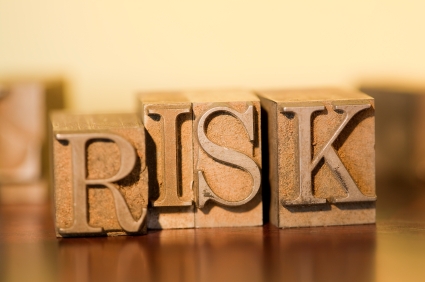Three Things You Need to Know About Trust: Part 2
There are really only three things you need to know about trust. You can pretty much deduce the rest. The three parts are:
Part 2: Trust Requires Risk.
First, there is no trust without risk. Second, only one player takes the risk; this sets up a particular dynamic.
No Trust Without Risk
Ronald Reagan was blowing smoke when he famously said, “Trust, but verify.” The truth is, if you have to verify, it’s not trust. If it’s trust, then it’s not about verification. (Tellingly, Lenin was fond of the same phrase).
At one extreme, trust is bordered by blind faith, which is unbounded by data or reason. At the other, we have statistics, where risk is strictly a matter of probabilities and assumptions, governed by the rules of mathematics.
Trust lies curiously in between faith and probability – and a little off the straight and narrow of the continuum as well. A psychological relationship, it involves one party willingly putting itself in harm’s way of the other, with a significant but not perfectly quantifiable chance that the other may abuse the situation. No wonder we speak of it often with metaphors.
People say trust mitigates risk. That’s true, but it’s also true that risk creates trust. Without risk-taking, there can be no trust. We forget this when we try to create trust by eliminating risk.
Why is this important? If you remove temptation or risk, you create an artificial dependence outside of the critical trust relationship. For example, if you render financial institutions completely non-risky by over-doing tick-box compliance, you will also choke off trust. Trust eats risk for breakfast, and becomes stronger for so doing.
As with many things trust-related, this is paradoxical. Trust reduces risk, but it also thrives on risk. Robotic safety and predictability are components of trust, but small ones. A completely mechanical world may be risk-free, but it’s also trust-free.
One Player Takes the Risk
In its pure form, one party trusts, while the other is trusted. In my classes, it’s a running joke I play: would you rather get better at trusting? Or at being trusted? So far, every class has opted to get better at being trusted. Doh! That’s the non-risky choice.
It’s human nature to wish others to take the risk. Sometimes, we’re lucky. The other person asks us out first; the customer shows their hand first, reducing our fears about price; the interviewer shares something personal about themselves, setting us at ease.
If you’re willing to run your business dependent on the kindness of strangers, that’s fine. But if you prefer to make your own luck – or trust – you’re going to have to learn to take risks. As Wayne Gretzky said, you’ll never miss a shot you don’t take; but of course, you’ll never score a goal either.
One of the biggest barriers to trusting is the cult of trustworthiness. The professions in particular like to cloak themselves in the idea of a Trusted Advisor that is strictly about trustworthiness – but not about trusting. Such ideas include the high-minded virtues of integrity, tell-it-like-it-is courage, and a professional remove. But they frequently don’t encompass vulnerability and emotional risk-taking. They should.
———–
In the third part, I’ll talk about the reciprocity of trust – how the role of trustor and trustee gets traded back and forth, and what that means for the development of trust.




This is a classic test of trust. And as you state, getting clients to trust us is no risk, whereas trusting the client is more difficult as it has risks associated with it. When I was working with consultancy sales, clients would often conclude,”If it so good and will do so much for our bottom line, why don’t you start the work and we will pay you by results from all the savings/new revenues generated?” And what do you think the consultancy company says. No, its our policy you start paying up front, but we’ll do stage payments as we do the hours.” Straight away we are into not trusting client beyond a week of work – which even then isn’t much of a risk unless you have an overloaded diary and no free time.
It is the classic consultancy stand off with a client.
The great thing about working for your self or your own comapny is that you can take these risks and start building solid relationships. So far i’ve never been stiffed for a payment. But then I’ve never taken on work from someone I didn’t feel I could trust. I guess its about trusting your gut. But I’d rather take the risk than become paranoid, with all the issues thatwould bring to my work life.
Chris. Exactly. Precisely. What you said.
Thanks,
Charlie